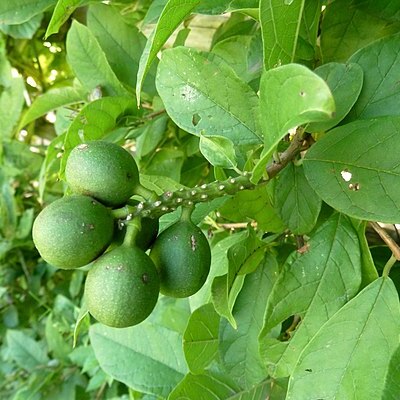Leaves opposite, bright red in winter (fide Palmer & Pitman, loc. cit.), sometimes bractlike near the inflorescences; lamina up to 9 x 5 cm., chartaceous, narrowly to broadly elliptic or obovate-elliptic, lepidote (sometimes inconspicuously) otherwise nearly glabrous, often shiny above, apex acute to obtuse or rounded, sometimes shortly mucronate, base cuneate; lateral nerves 4–6 pairs; petiole 2–7 mm. long.
Fruit reddish, 1·3–2 x 1·3–1·9 cm., subcircular to broadly elliptic in outline, lepidote otherwise glabrous to slightly pubescent mainly on the body; apical peg absent or less than 0–5 mm. long, wings up to 8 mm. wide, stipe 4–7 mm. long.
Tree, 15 m high. Leaves glabrous beneath when mature, with reticulate venation on lower surface. Fruit 20 mm long, reddish. Flowers in elongated, lax spikes, white.
Lower receptacle 2–3 x 0·5 mm., viscid, glabrous; upper receptacle 1·5–2 x 3—4 mm., cupuliform to broadly campanulate, lepidote otherwise nearly glabrous.
Inflorescences of axillary spikes up to 1–3 cm. long; rhachis densely pubescent; bracts c. 2 mm. long, filiform, caducous; peduncle usually c. 1 mm. long.
Scales as in C. erythrophyllum but usually with only 8–10 primary walls (but up to 10–16 in C. nelsonii).
Tree 6(10) m. high or shrub; branchlets tomentellous to nearly glabrous.
Stamen-filaments 5–6 mm. long; anthers 1 mm. long.
Petals l–2 x 0·7–0·8 mm., spathulate, glabrous.
Disk with pilose margin free for c. 0·5 mm.
Style 5 mm. long, rather stout.
Sepals 1·5 x 2 mm., deltate.
Flowers sessile.



